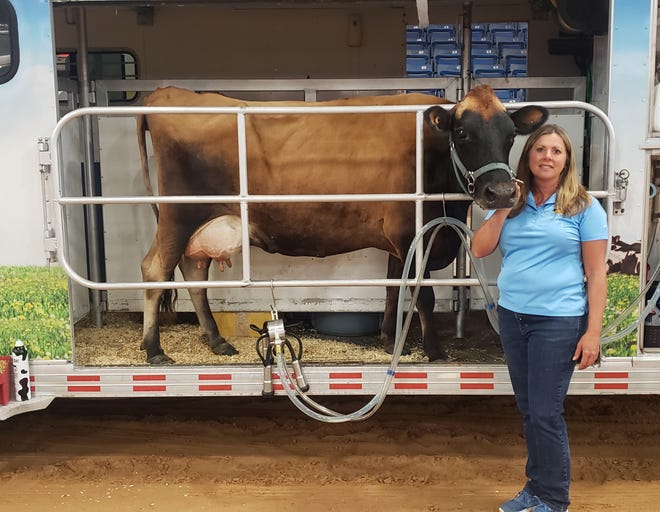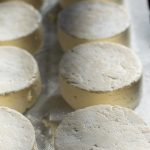
How to froth milk without a frother Froth milk at home with items you already have at home. ProblemSolved, USA TODAY
The wide availability and convenience of modern grocery stores have allowed the vast majority of the population to become increasingly removed from the sources of our food, and people rarely pause to think about how products come to be on the shelves. But visitors to the Carter County Free Fair can do just that courtesy of a mobile dairy classroom.
Suzie Reece, Oklahoma educator with Southwest Dairy Farmers, was at the fair on Thursday and will return Friday with her eight-year-old Jersey cow Snickers. The pair travel the state visiting county fairs and schools to give live milking demonstrations and educate the public about the dairy industry and the nutritional value of milk.
“I actually start out by milking by hand to show the traditional way,” she said. “That sends a signal to the cow’s brain that it’s time to be milked. Then we use a milking claw to milk the cow live in front of the audience. Afterwords we talk about the processes of pasteurization and homogenization and how it travels quickly from the farm to the grocery store within three or four days.”
When do cows start making milk?
Reece said cows begin producing milk after giving birth to their first calf, and that typically happens at around the age of two.
“Once they have their calf, we typically milk them for about 10 months and then give them a two month vacation that we call a dry cow period,” she said. “A dairy cow is pregnant for nine months so the gestation cycle is very similar to humans. We’re able to milk them while they are pregnant, and my cow that I travel with typically has a baby every August.”
Reece said cows typically produce milk until they are around 10 to 12 years old, but this can vary widely from cow to cow with some dairy cows aging well into their 20s. She said the key to dairy cow longevity is heath care with regular vaccinations, worming, and hoof trimming. A comfortable environment is another major factor in how long a cow will live.
Story continues below.
“The older the cow, the more milk production they have,” she said. “We like those older cows on our farms because every year they have have a calf they produce more milk for the farmer. With their first calf they don’t produce as much milk as a cow like Snickers who has calved six times. Older cows also know the routine and typically get along better with people and other cows.”
Reed and Snickers will return to the fair from 9 a.m. to 2 p.m. on Friday, Sept. 10. As of lunchtime Thursday around 125 students and visitors had come through for the demonstration, and more schools are planning on coming for her second day. Any educators interested in making arrangements for the mobile dairy classroom to visit their schools can do so by visiting www.southwestdariyfarmers.com.
























